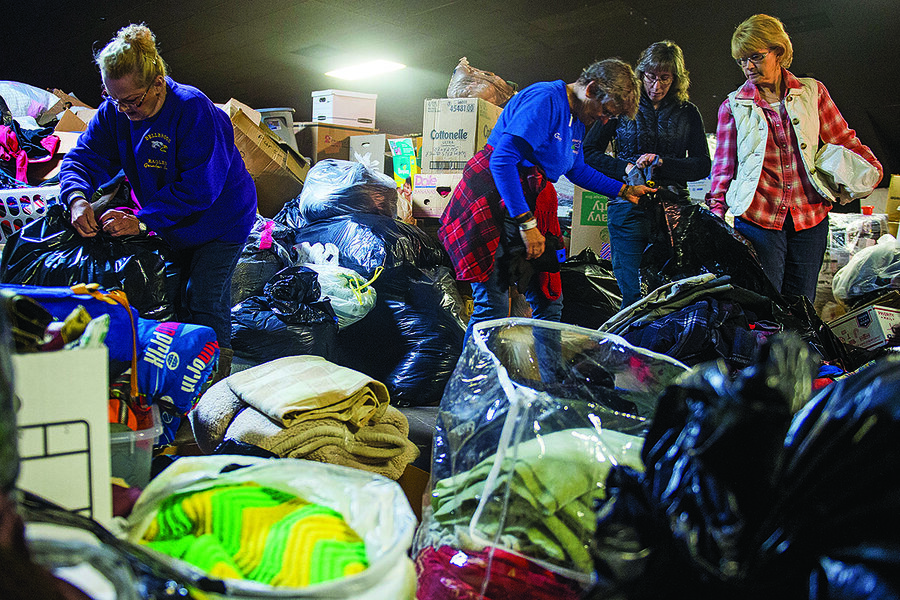Ethos of rugged independence in Appalachia spurs neighbors to turn to neighbors
Americans have always been generous givers. It was evident in the nearly $2 billion they donated to victims of the 2004 tsunami in Southeast Asia. It was even more striking a year later when more than two-thirds of all US households gave money to hurricane-related causes – most notably the $5.3 billion that went to residents of New Orleans after truculent hurricane Katrina.
This is to say nothing of the countless volunteers who showed up, claw hammers in hand, to begin the long resurrection of America’s beloved capital of bohemia.
American generosity has been on display recently in the corrugated hills of Appalachia, too. Hundreds of volunteers and millions of dollars have poured into Gatlinburg, Tenn., and surrounding towns in the wake of last November’s devastating fire, which killed 14 people and destroyed more than 2,100 homes.
Part of this response reflects that charitable impulse that arises after almost any natural disaster. But part of it reflects something different: As correspondent Doug Struck points out in this week’s cover story, there is an ethos of rugged independence that permeates Appalachia, which spurs neighbors to turn to neighbors rather than relying on government agencies for help.
Gatlinburg has a long way to go to fully revive. The area is a tourist hub and gateway to Great Smoky Mountains National Park. A lot of visitors stayed away in the first few months after the fire, though they have come back since then. Many homes remain to be rebuilt. Some residents have left permanently rather than starting over. Government red tape is a frustration with many of those erecting new houses, as it is in every post-disaster redevelopment effort.
Yet local residents have been buoyed by the legions of volunteers who have descended on the place with their good intentions and growling circular saws. Doug was impressed, too. A frequent contributor to the Monitor, he has been a national and foreign correspondent for The Washington Post and The Baltimore Sun. In his more than three decades as a journalist, he has covered stories in all 50 states and in six countries.
What struck him in Gatlinburg was the empathy people felt for their neighbors and how committed they were to helping them. He tells the story of one woman who watched on that night as the fire, in the orange distance, moved relentlessly through her neighborhood. She was sure it had consumed her house. She found out later it had leapt over her home and she felt ... sorry. Sorry that her neighbors had lost their houses. “Why did the fire spare mine?” she asked Doug, tearing up seven months after the blaze.
Doug was also impressed with the modesty of the volunteers, who toiled long after the national news reporters had left with their cameras. One of them, Kat Humlicek, deflected accolades for the work she was doing, insisting it was she who was inspired by “the abundance of generosity” she found in the community.
Similarly, Jim Bailey, a volunteer from Knoxville, Tenn., kidded gently with a crew of retired men as they raised the wall of a home. As Doug describes the scene, they were “perfectly content in the simple reward of helping someone else.”







